Australian penny coins by the years
1911
Mint: London
Mint mark: None
Mintage: 3,768,000
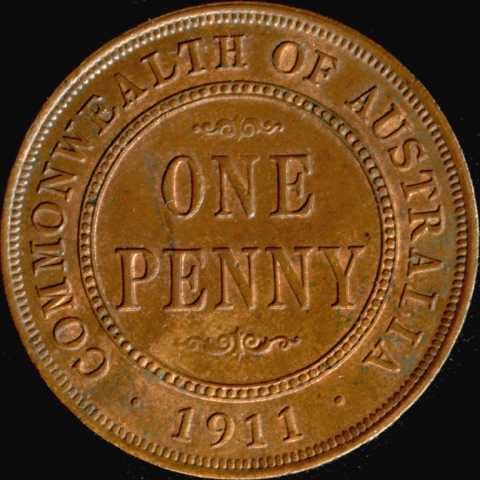
1912
Mint: Heaton & Son
Mint mark: H below lower scroll
Mintage: 3,600,000
The 1911 penny was struck at the Royal Mint in London but in 1912 the task of minting Australian pennies was sub-contracted to the private mint facility of Heaton & Son in Birmingham. The same obverse die was used for the London and Birmingham strikes but the reverse dies were different. The 1911 (London) reverse had 174 rim denticles but the 1912 (Birmingham) die sported 177.
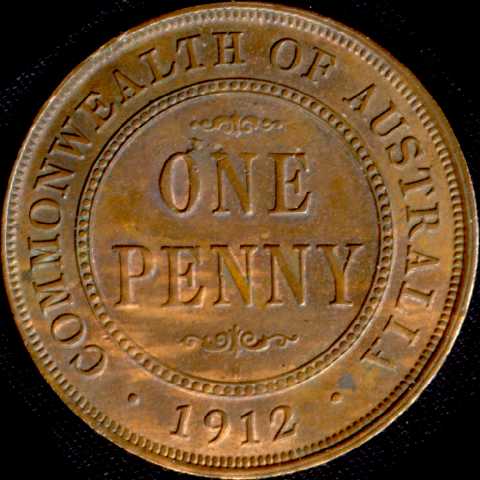
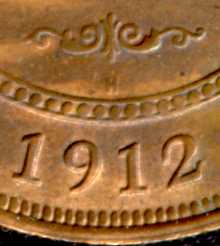
1913
Mint: Obverse - London, Reverse - Birmingham
Mint mark: None
Mintage: 2,520,000
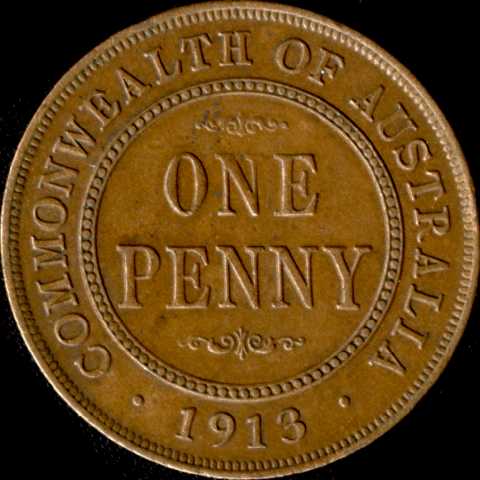
1914
Mint: Obverse - London, Reverse - Birmingham
Mint mark: None
Mintage: 720,000
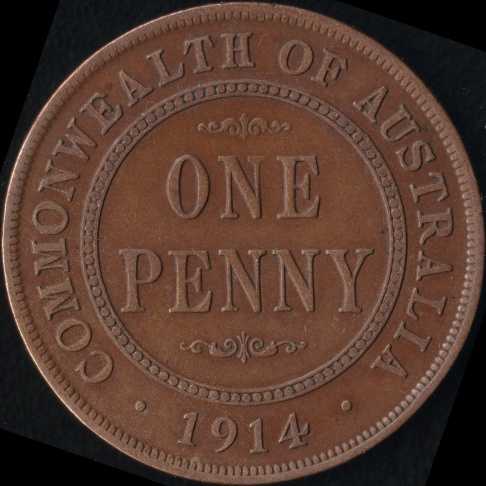
1915
Mint: Obverse - London, Reverse - Birmingham
Mint mark: None
Mintage: 960,000
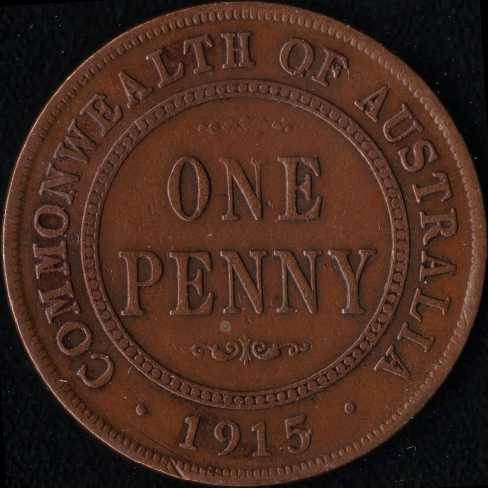
Mint: Obverse - London, Reverse - Birmingham
Mint mark: H below lower scroll
Mintage: 1,320,000
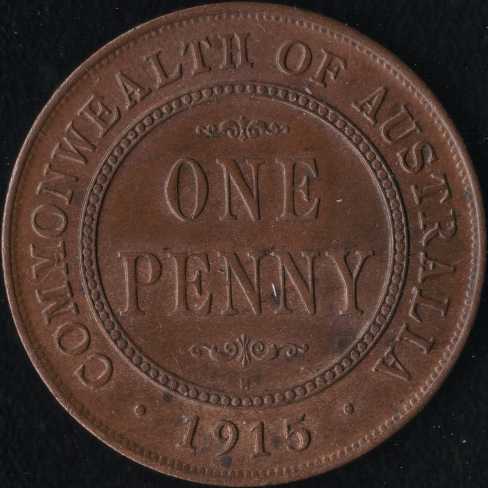
1916
Mint: CalcuttaMint mark: I below lower scroll
Mintage: 3,324,000
The demands on the Royal Mint imposed by World War I meant that it could not
fulfil all the coinage needs of the Australian government. At the time, the Australian
branch mints in Sydney and Melbourne were not equipped to strike copper coinage
and so the Royal Mint temporised by assigning the contract for Australian bronze
coinage to the Calcutta branch mint.
New obverse and reverse tools were sent to Calcutta.
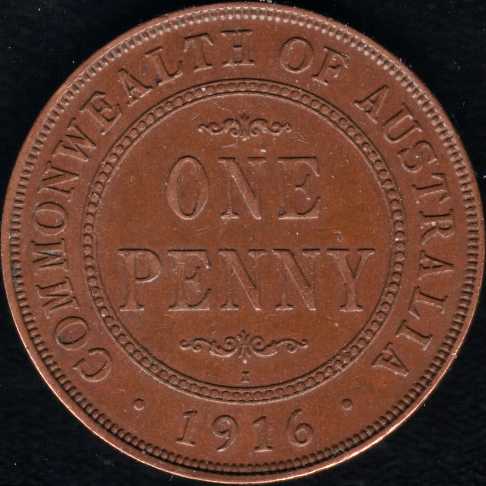
1917
Mint: CalcuttaMint mark: I below lower scroll
Mintage: 6,240,000
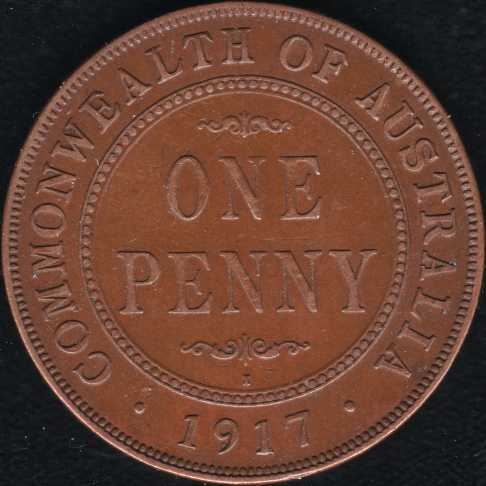
1918
Mint: CalcuttaMint mark: I below lower scroll
Mintage: 1,200,000
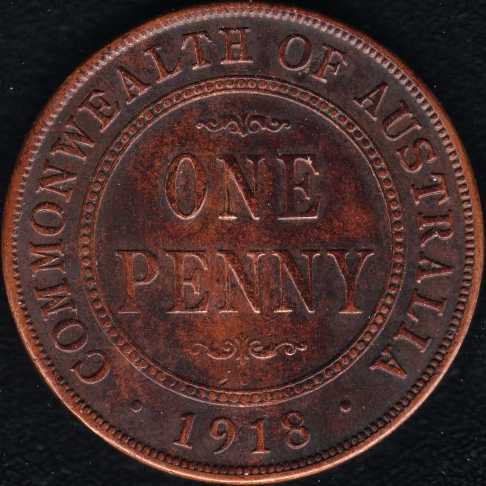
1919
Mint: MelbourneMint mark: None
Mintage: 5,817,000
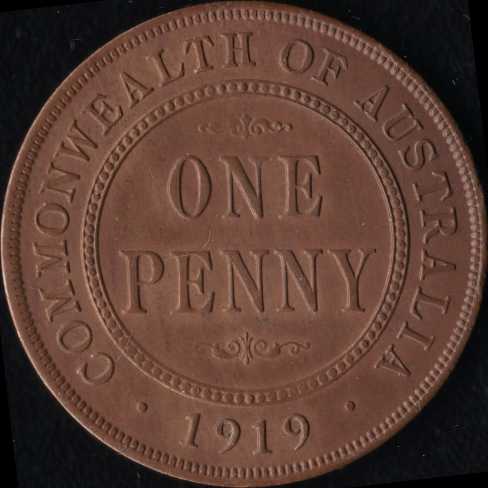
1920
Mint: MelbourneMint mark: None
Mintage: 5,817,000
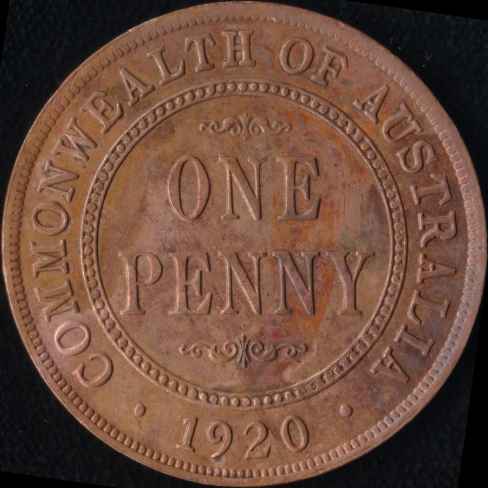
1922
Mint: Melbourne and PerthMint mark: None
Mintage: 12,697,000
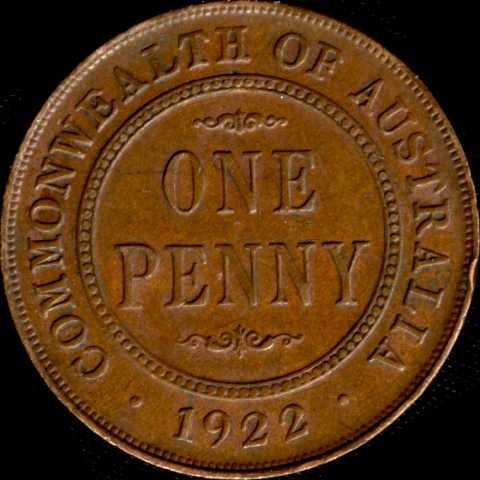
1924
Mint: Melbourne and SydneyMint mark: None
Mintage: 2,649,840 + 2,016,000
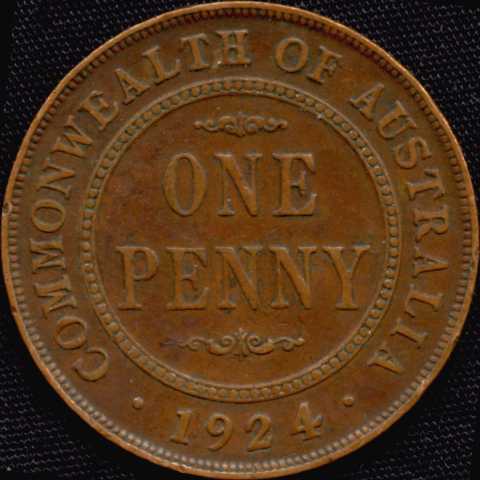
1925
Mint: MelbourneMint mark: None
Mintage: 117,600
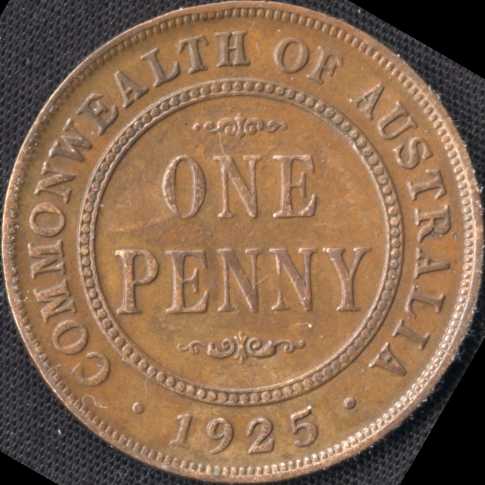
1928
Mint: MelbourneMint mark: None
Mintage: 3,086,000
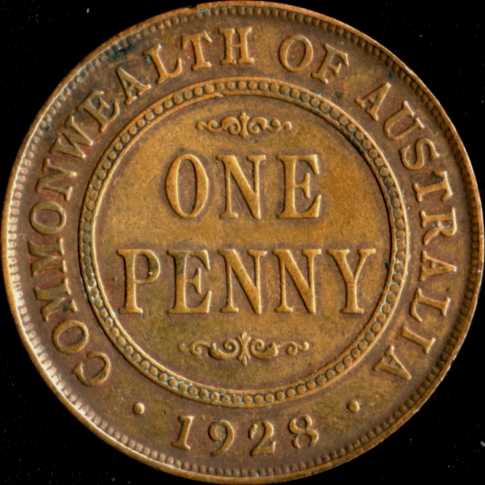
1929
Mint: MelbourneMint mark: None
Mintage: 2,599,000
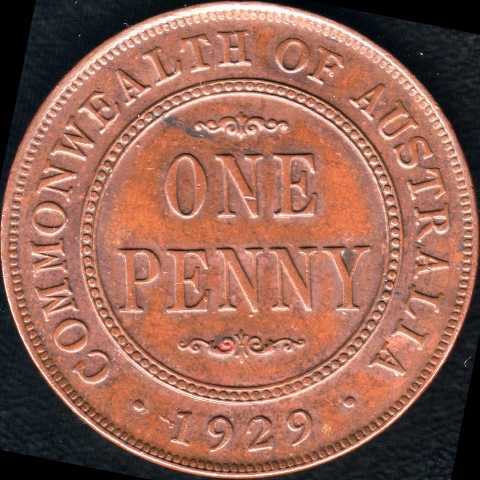
1930
The 1930 penny is probably the most famous of all the Australian Commonwealth coins. Its existence was not known for some time after the coin was released into circulation.
According to an article titled "Notes on Australian Pre-decimal Coinage" by Bill Mullett published in the 1996 Journal of the Australian Numismatic Society, "The now famous 1930 penny was the result of experimental work undertaken to produce better pennies for the 1930s".
No pennies were ordered by the Treasury for 1930. The 1931 order did not specify a date to appear on the coins and so the good coins from the 1930 experimental work were available for distribution with the 1931 mint issue.
It is not known how many 1930 pennies were struck. Estimates vary from around 2,000 to 10,000 with about 3,000 being the most commonly quoted figure. About 1,500 coins are being traded in the marketplace.
The fame of this coin is responsible for its high price.
A 1930 penny in VF condition will fetch something close to $30,000 whereas an uncirculated 5/- Internment Camps token of which maybe 80 specimens exist, might fetch less than a tenth of that price
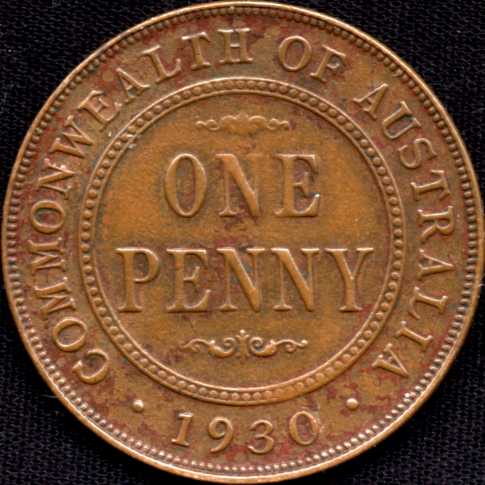
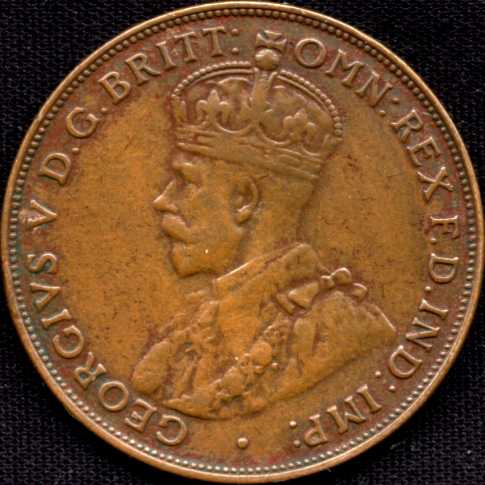
1931
Mint: MelbourneMint mark: None
Mintage: 494,400
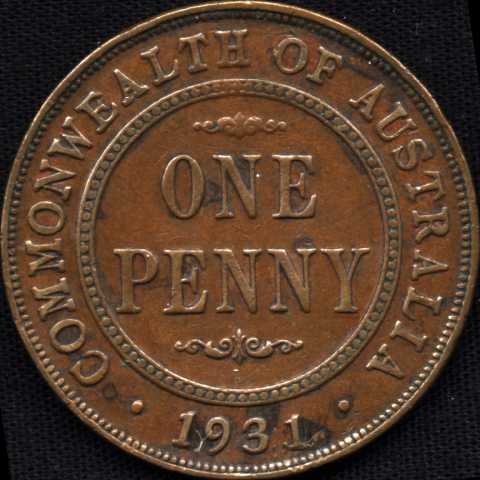
1932
Mint: MelbourneMint mark: None
Mintage: 2,116,000
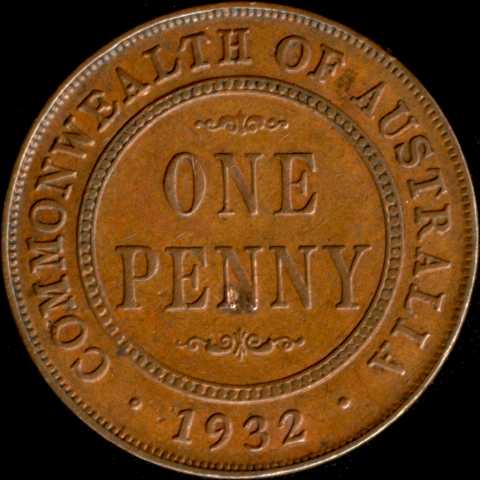
1933
Mint: MelbourneMint mark: None
Mintage: 5,817,000
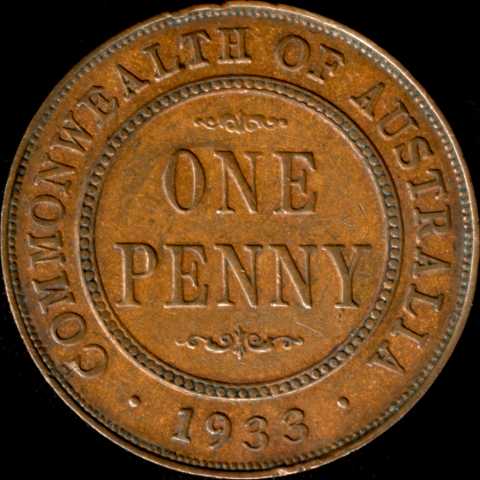
1942
Mint: PerthMint mark: None
Mintage: 12,244,800
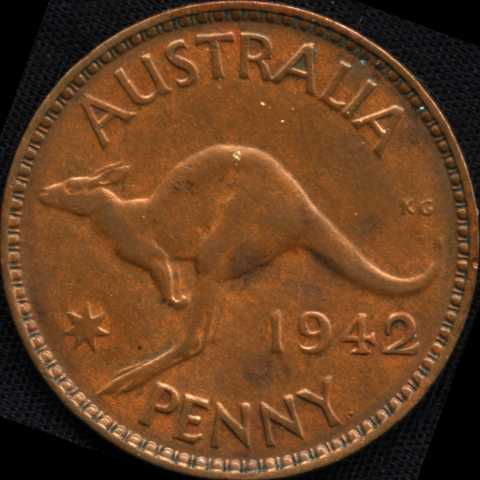
Mint: Bombay
Mint mark: Dots before and after PENNY
Mintage: 9,000,007
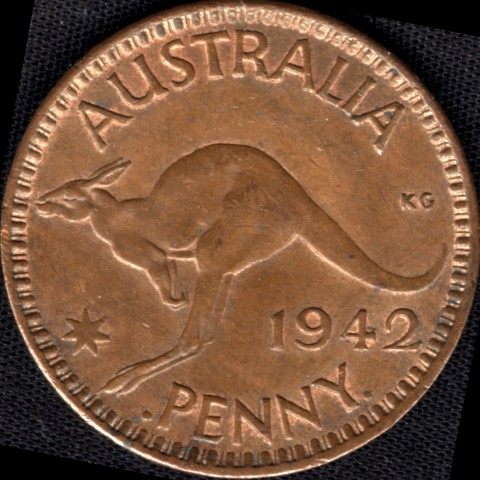
1943
Australian pennies dated 1943 were minted in Melbourne, Perth and Bombay. The Melbourne and Perth issues were struck with dies made from the 1938 master tools and the only distinguishing feature is a small dot after the Y of PENNY on the Perth issue. The Bombay issue was first struck using dies made from the 1942 Bombay tools but apparently quite early in the year a new reverse master was made with less flamboyant rim embellishment and that tool was used to make working dies for the bulk of the 1943 striking.
Mint: Melbourne
Mint mark: None
Mintage: 11,017,200
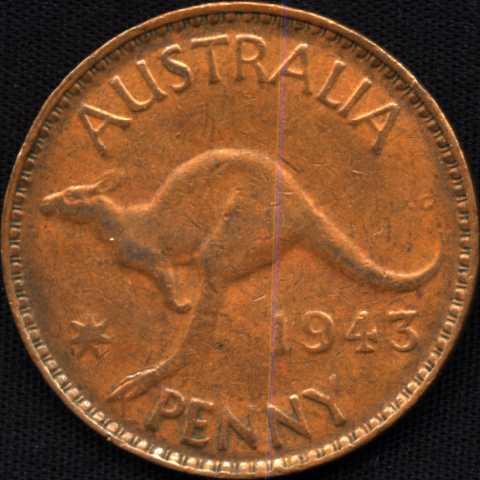
Mint: Perth
Mint mark: Dot after PENNY
Mintage: 33,086,400
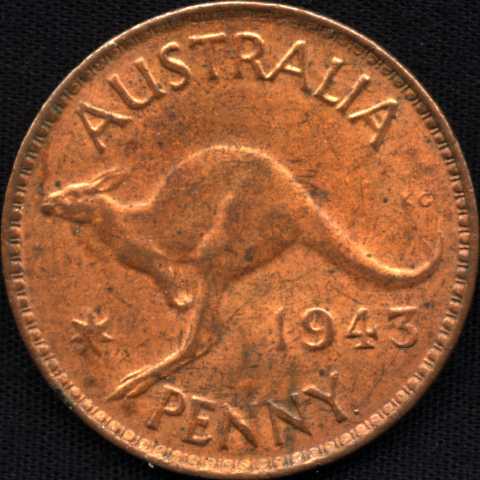
Mint: Bombay
Mint mark: Dots before and after PENNY
Mintage: 9,000,006
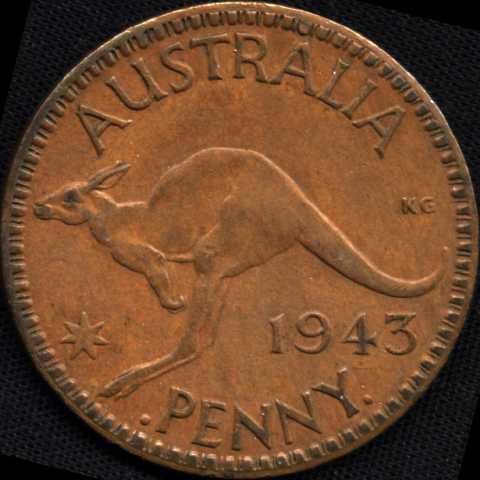
1944
Mint: MelbourneMint mark: None
Mintage: 2,450,400
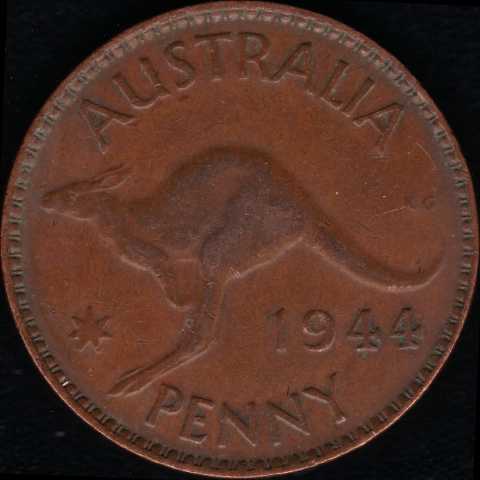
Mint: Perth
Mint mark: Dot after PENNY
Mintage: 27,830,400
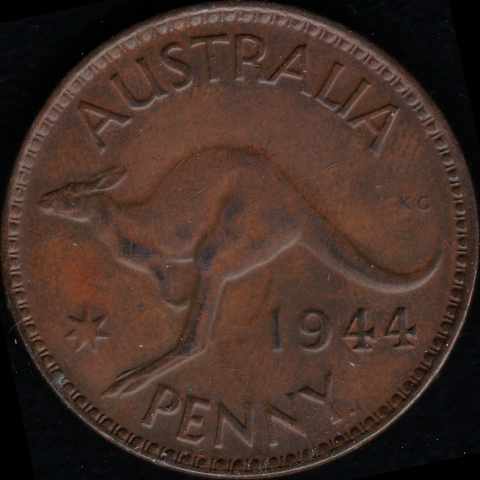
1945
Mint: PerthMint mark: Dot after PENNY
Mintage: 10,125,600
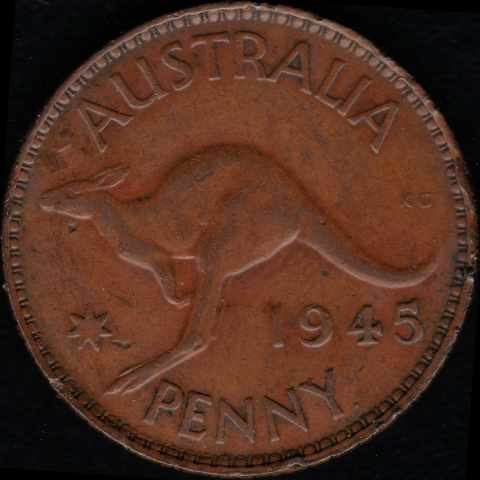
1946
Mint: MelbourneMint mark: None
Mintage: 363,600
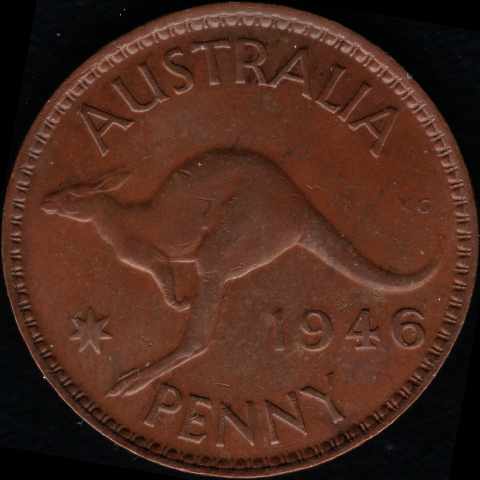
1947
Mint: MelbourneMint mark: None
Mintage: 6,759,600
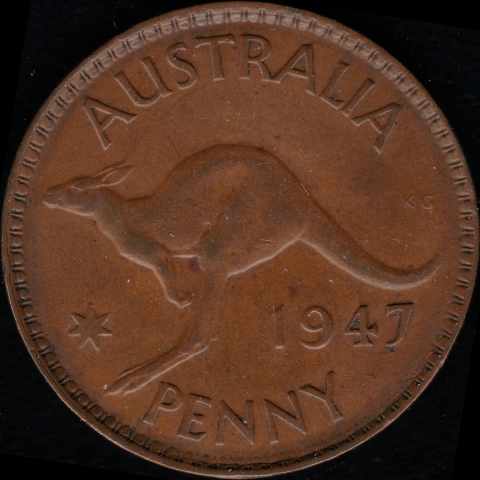
Mint: Perth
Mint mark: Dot after PENNY
Mintage: 4,490,400
1948
Mint: MelbourneMint mark: None
Mintage: 26,625,600
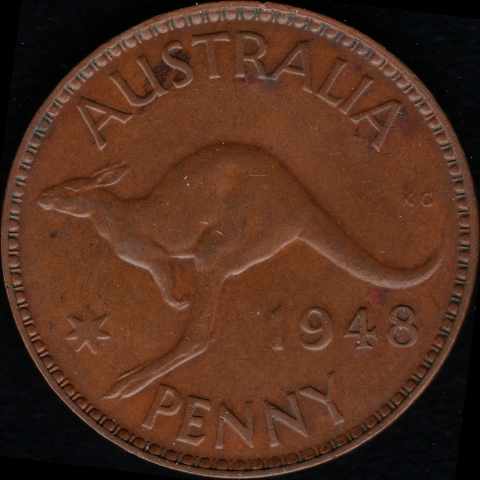
Mint: Perth
Mint mark: Dot after PENNY
Mintage: 1,533,600
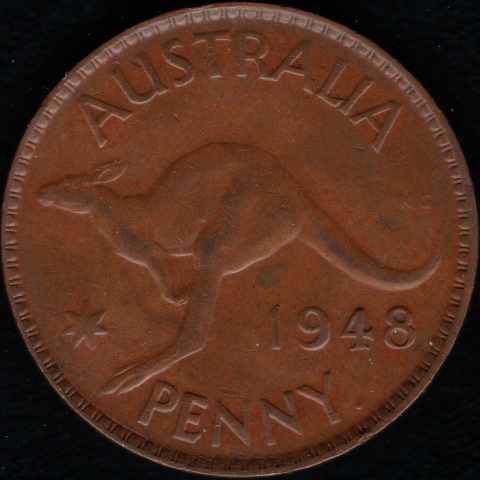
1953
Mint: MelbourneMint mark: None
Mintage: 6,933,600
Mint: Perth
Mint mark: Dot after PENNY
Mintage: 6,202,800
1955
Mint: MelbourneMint mark: None
Mintage: 6,348,000
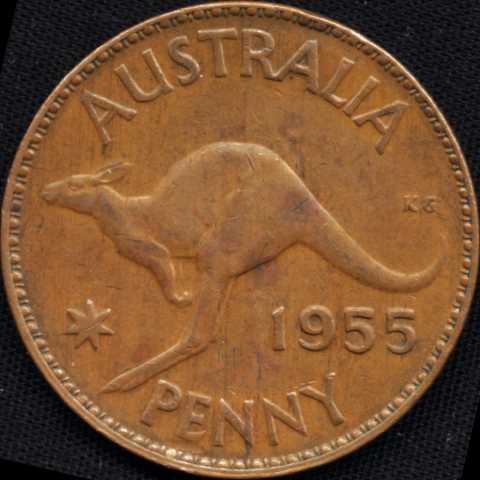
Mint: Perth
Mint mark: Dot after PENNY
Mintage: 11,109,600
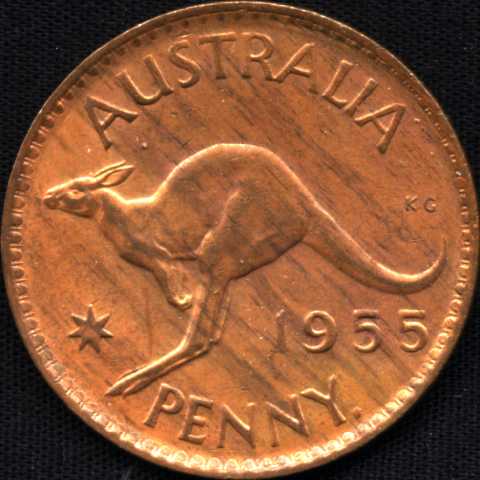
1956
Mint: MelbourneMint mark: None
Mintage: 13,872,000
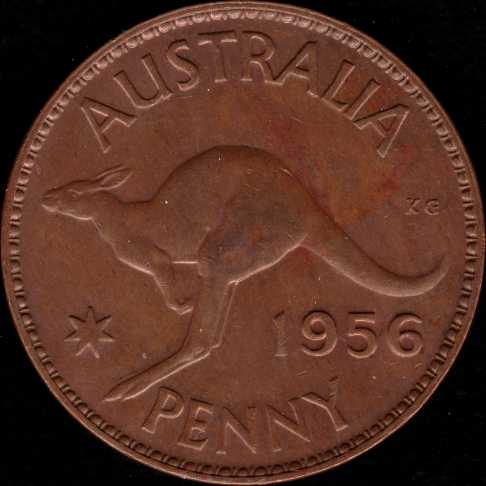
Mint: Perth
Mint mark: Dot after PENNY
Mintage: 12,121,200
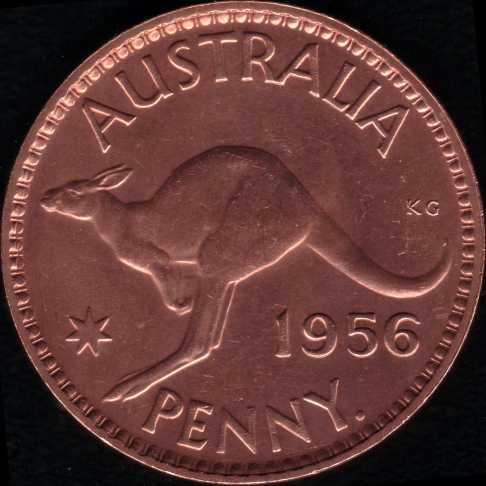
1957
Mint: PerthMint mark: Dot after PENNY
Mintage: 15,773,200
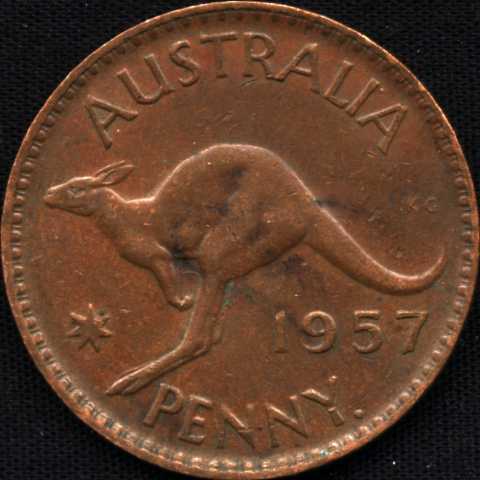
1960
Mint: PerthMint mark: Dot after PENNY
Mintage: 20,052,000
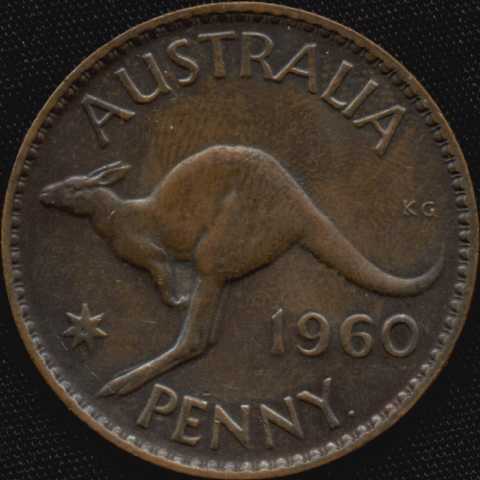
1961
Mint: PerthMint mark: Dot after PENNY
Mintage: 32,868,000
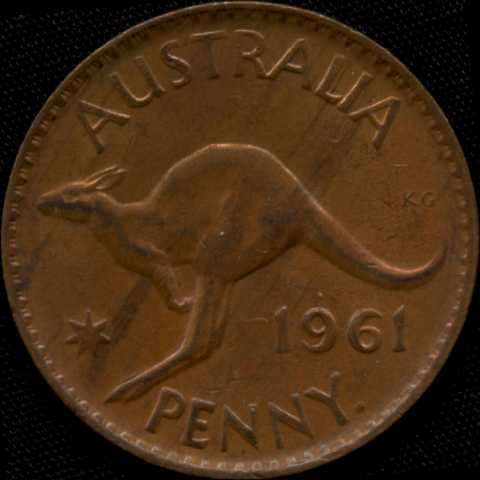
1962
Mint: PerthMint mark: Dot after PENNY
Mintage: 34,861,60
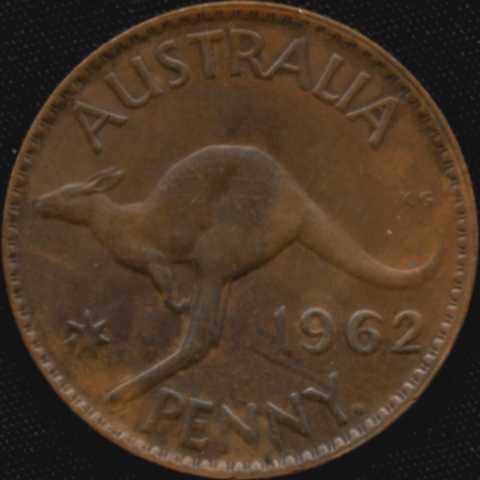
1963
Mint: PerthMint mark: Dot after PENNY
Mintage: 37,234,700
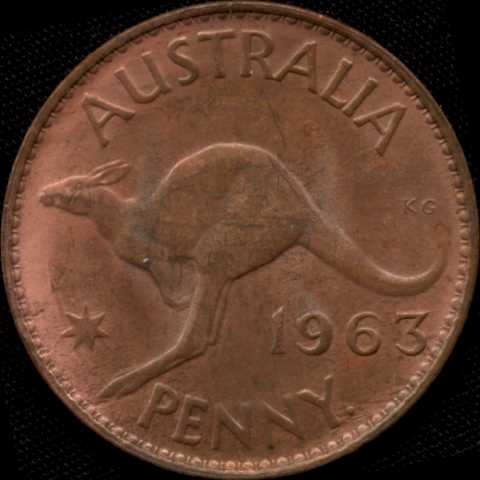
Other Australian coins
Elizabeth II coins (1952-2022)

